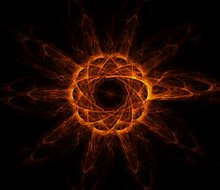The Uranium Focused Energy Fund will concentrate on the securities of uranium miners and others in the sector, “supplemented with the securities of other energy-related issuers,” says fund promoter Middlefield Group.
The $195-million initial public offering will be listed on the Toronto Stock Exchange.
“In light of the significant capital and time requirements associated with the development of new uranium mines, the adviser expects uranium prices to remain strong over the life of the fund, which will terminate on Dec. 31, 2013,” Middlefield said Tuesday.

„The need to diversify our fuel-energy balance is obvious,” Deputy Prime Minister Sergei Ivanov said today in Moscow. „In the foreseeable future, Russia will take third place in the world in terms of uranium resources, which will be about 1 million tons.” Russia plans to spend 674 billion rubles ($26 billion) in the next eight years to develop its nuclear industry, he said. The former Soviet state now has about 800,000 tons of uranium resources, lagging behind Australia and its 1.14 million tons and Kazakhstan, which has 1.13 million tons.
Russia is turning to atomic energy amid concerns about the nation's capacity to meet export commitments for oil and gas. Concern about pollution and the potential scarcity of oil and gas is spurring international demand for nuclear power. Cameco Corp., the world's biggest nuclear power producer, agreed this month with Russia's state-owned nuclear trader to become the first foreign miner to explore for uranium in the country after prices of the radioactive metal soared. The spot price for uranium, from which fuel for nuclear power plants is made, advanced to $85 a pound earlier this month, 18% higher than at the start of the year, according to industry publication Metal Bulletin. The price has surged in part on speculation by investors that there may not be enough of the metal to fuel the next generation of nuclear reactors.
Russia is now planning to get 30% of its energy from nuclear power by 2030, almost double the current proportion. The country's nuclear industry gets a third of its revenue from exporting nuclear fuel services, which includes enrichment of uranium and construction of power plants. Building power plants abroad allows Russia „to gain global influence and authority,” as well as bringing in cash, Ivanov said. Russia will soon register OAO Atomenergoprom, a holding company that will to take charge of all of Russia's civilian nuclear industry, Ivanov said today. All of Atomenergoprom's shares will belong to the government and all its transactions will be subject to presidential decree, he said.Uranium Quick Facts.......Supply & Demand
There are approximately 435 nuclear reactors operating in 30 countries. These reactors (including 103 in the United States) consume about 180 million pounds of uranium a year........ current worldwide production of uranium is about 100 million pounds.
The International Atomic Energy Agency expects another 30 nuclear reactors to be built in the next 15 years.
